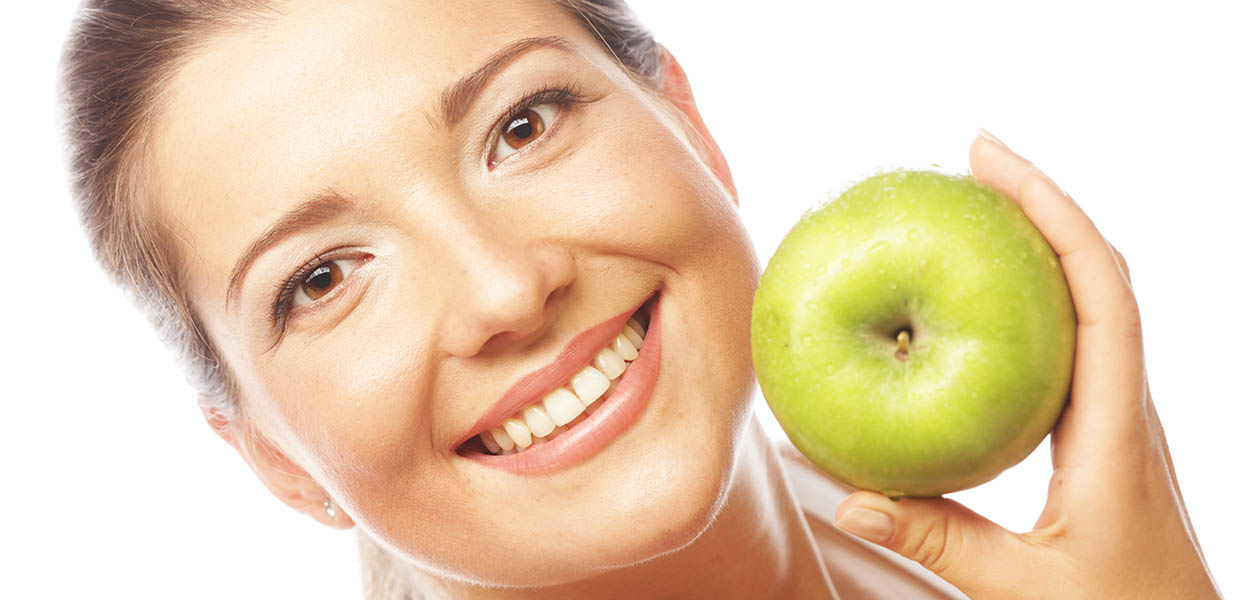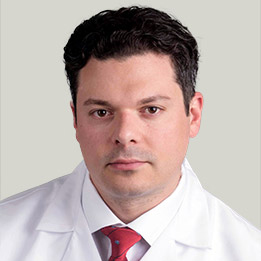Nine Essential Food Guidelines For Orthodontic Patients

WILMETTE, Ill.– Your appetite doesn’t change when you receive braces or Invisalign, but your diet should. Most sticky, chewy and crunchy foods must be avoided during treatment. At Stosich Consulting, we understand adjusting your food choices to accommodate treatment can be challenging.
“You could say the dietary changes that come along with braces is the downside of orthodontics, but there doesn’t have to be a drastic change,” says Wilmette area orthodontist Dr. Michael Stosich. “By making a few simple tweaks, patients can still enjoy the foods they love and actually help facilitate their treatment.”
To help you better navigate those necessary diet adjustments, here are nine food guidelines to abide by during orthodontic treatment:
1. Eat a balanced diet.
Nutrition plays an important role during orthodontic treatment. The healthier your teeth and oral tissues are, the better they respond to braces and Invisalign. When combined with good oral hygiene and professional dental care, eating the right foods will keep your smile healthy and strong enough for treatment.
We highly recommend you nourish your body with essential vitamins and minerals and avoid sugar overdoses. Vitamin deficiencies can manifest in your teeth, gums, lips, cheeks and tongue, so eating a balanced diet is a great way to gain energy, fuel your body and keep your smile thriving. Check out this website to learn how much of each food group you should consume each day.
Be sure to limit the intake of sugary drinks and candies, as well. The acidity and sugars found in beverages like soda and sports drinks can promote tooth decay and gum disease- both of which may complicate your treatment with us.
A struggle you may face during orthodontic treatment is avoiding foods that are too crunchy or sticky. Unfortunately, some patients resign to a diet of a few soft foods with little nutritional value, resulting in a shortage of important nutrients. This article discusses a few easy modifications you can make to consume necessary foods without damaging orthodontic appliances. If it’s more convenient for you, take a daily vitamin supplement.
2. Avoid tough, stringy meats.
Eating an adequate amount of protein and iron is important, but many popular cuts of meat aren’t ideal for braces. Fibrous meats that are well done, tough or stringy are rough on orthodontic appliances and may promote jaw pain. Moreover, biting into a delicious rib or chicken wing is an easy way to pop a bracket and necessitate an emergency visit with us.
Braces are tough, but they have their limits. For the wellbeing of your appliances, we recommend you select tender cuts of meat. Try ground beef, fish, sausage or chicken. Meats cooked in a slow cooker or cut off the bone should be safe, as long as they are cut into small pieces and chewed slowly. If you’re a vegetarian, eat tofu, almond butter or peanut butter.
3. Invisalign patients have food restrictions, too.
Without question, Invisalign has its benefits. Invisalign aligners are virtually invisible, easily removed and come with fewer food restrictions. Keyword: fewer.
Because aligners are removed when eating, there are no orthodontic appliances to worry about when munching on crunchy or chewy foods. If teeth aren’t properly brushed and flossed after meals, however, the aligner will press food debris into teeth and gums, likely triggering unpleasant conditions like tooth decay, gum disease, bad breath and yellowing.
If there’s not enough time to thoroughly clean teeth after meals, Invisalign patients should choose foods that are less likely to become wedged between teeth and stuck on the tooth’s surface. Also, drink plenty of water to rinse away food debris. Especially sticky foods and sugary drinks should be avoided.
4. Chill out- have a milkshake.
Sometimes, your mouth can become sore after receiving braces or following appointments. One sweet solution to the discomfort is to enjoy a cold treat. Not only do frozen goodies like milkshakes, smoothies and ice cream pose no threat to braces, but they can temporarily relieve that “tight” feeling while satisfying your sweet tooth. With this said, avoid biting into crunchy popsicles and make sure your treat of choice isn’t too frozen. Foods that are too cold might add to the pain.
There are a few caveats to this guideline. The occasional milkshake following an appointment is permissible, but too much of a good thing can promote tooth decay. Brush teeth after enjoying a frozen treat and limit your trips to the ice cream parlor.
5. Eat plenty of (braces-friendly) fruits.
Fruit is an essential and delicious part of everyone’s diet. Rich in vitamins and minerals, fruits nourish your body as well as your smile. One study even notes that the ascorbic acids found in fruits such as oranges, kiwi and strawberries can encourage oral tissues to heal during orthodontic treatment, which helps facilitate the aligning process.
Most fruits are soft and easily consumed with braces. Strawberries, blueberries and raspberries are excellent braces-friendly snacks. (Be sure to remove seeds from brackets after eating, though!) However, some fruits should be enjoyed with caution. Don’t bite directly into crunchy fruits like apples and unripe pears, as this action can loosen orthodontic appliances. Instead, cut such fruits into bite-sized pieces and chew with your back molars.
6. Consume enough dairy.
We’ve all learned that milk gives you strong teeth and bones, but stellar oral health benefits can be found in most all dairy products. And since strong, healthy teeth help to streamline orthodontic treatment, we encourage patients ages 8 and older to eat their recommended 3 cups of dairy each day.
The calcium, vitamin D and potassium found in foods like yogurt, milk and cheese are behind dairy’s dental health benefits. These essential vitamins and minerals fortify teeth, neutralize damaging acids in the mouth and inhibit tooth decay. Conveniently, dairy products are usually soft and braces-friendly.
7. Chew gum. Really.
Historically, chewing gum has been a serious orthodontic no-no. And in many aspects, it still is. However, cautiously chewing sugar-free varieties while in braces can stimulate blood flow around the gums. This increased circulation helps relieve soreness and inflammation. To protect appliances, slowly chew gum with your back molars.
Popping in a piece of your favorite sugar-free gum also stimulates saliva production. Having a proper amount of saliva in the mouth is important for many reasons. Saliva rinses away lingering plaque and acids, fortifies the enamel and helps create a clean and healthy oral environment.
8. Too crunchy? Heat it up.
Crunchy vegetables pose a major threat to braces, yet this food group is essential to achieving a healthy body and mouth. Instead of skimping on your vegetables, steam or grill them. Not only are steamed broccoli and carrots or grilled zucchini and peppers delicious and wholesome, they are chewed with ease.
We also recommend that you soften tough-crusted breads by microwaving them and tearing them into small pieces. This rule can be applied to most foods that are tough and could uproot braces.
9. Stay diligent- it’s worth it.
At Stosich Consulting, we understand resisting your favorite crunchy, chewy and sticky foods can prove to be a challenge. However, discipline during a brief time in braces or Invisalign will be rewarded with an aligned and dazzling smile. A diligent diet filled with soft and nutritious foods results in healthier teeth and a more efficient treatment process.
“Along with implementing good oral hygiene, making smart food choices is one way patients can keep their treatment on course,” Dr. Stosich says.
If you have further questions regarding diet restrictions during orthodontic treatment, contact us. Dr. Stosich is recognized nationally as a pioneer in orthodontics and a leader in patient care. He and our friendly staff are eager to help you enjoy the treatment process and achieve optimal results with minimal inconvenience.
Stosich Consulting is a trusted provider of orthodontics in Wilmette, Grayslake, Skokie, Round Lake and Kenilworth.
© 2014 Dr. Michael Stosich. Authorization to post is granted, with the stipulation that Dr. Michael Stosich is credited as sole source. Linking to other sites from this article is strictly prohibited, with the exception of herein imbedded links.


